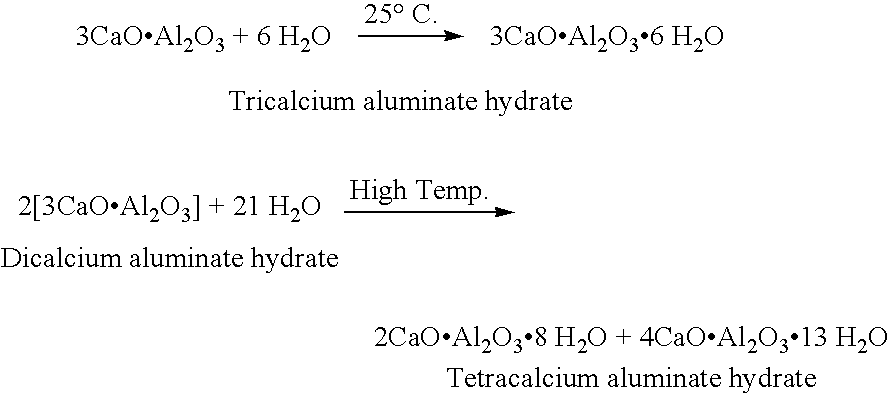Negative electrodes of alkaline batteries and their methods of fabrication
a technology of negative electrodes and alkaline batteries, which is applied in the direction of non-metal conductors, cell components, sustainable manufacturing/processing, etc., can solve the problems of short cycle life, deformation or change of zinc electrode shape, redistribution of zinc, etc., and achieves low cost, long cycle life, and large capacity
- Summary
- Abstract
- Description
- Claims
- Application Information
AI Technical Summary
Benefits of technology
Problems solved by technology
Method used
Image
Examples
embodiment 1
[0048] The steps for the fabrication of the negative electrode of this embodiment include: [0049] mixing uniformly 0.5 g of tricalcium silicate, 0.25 g of dicalcium silicate, 0.08 g of tricalcium aluminate, 0.03 g of calcium sulfate dihydate, 16 g of mercury-free zinc powder, 60 g of zinc oxide, 3 g of conductive carbon black and 3 g of cadmium oxide; [0050] stirring the above mixture with 20 g of 3% concentration polyvinyl alcohol (PVA), 25 g of 2% hydroxylpropyl methyl cellulose (HPMC), and 5 g of deionized water to form a paste; [0051] coating said paste on a mesh copper belt coated with Pb—Sn alloy with a thickness of 0.07 mm and width of 42 mm; [0052] drying with heat in a stand dryer; and [0053] rolling, trimming, and welding conduction tabs to obtain a couple of negative electrodes with length 95 mm.
[0054] The steps for the fabrication of the positive electrode include: [0055] stirring 92 g of spherical nickel hydroxide, 7 g of cobaltous oxide, 11 g of conductive carbon blac...
embodiment 2 to embodiment 12
[0068] The method of fabrication for the negative electrodes of these embodiments is the same as Embodiment 1. The material is the same as Embodiments 1, except that the quantities of additive and retarder are different. These quantities are shown in Table 1.
[0069] The fabrication of the separator and positive electrode, and the assembly of the batteries in these embodiments are the same as Embodiment 1.
TABLE 1CalciumTricalciumDicalciumTricalciumSulfateSilicateSilicateAluminateDihydrateEmbodiment(g)(g)(g)(g)Embodiment 21.30.60.20.07Embodiment 31.80.90.30.1Embodiment 43.61.80.60.2Embodiment 55.22.61.00.5Embodiment 66.63.31.20.8Embodiment 77.73.91.51.5Embodiment 8500.90.4Embodiment 9050.90.4Embodiment 104200Embodiment 112400Embodiment 120046.4
PUM
 Login to View More
Login to View More Abstract
Description
Claims
Application Information
 Login to View More
Login to View More - R&D
- Intellectual Property
- Life Sciences
- Materials
- Tech Scout
- Unparalleled Data Quality
- Higher Quality Content
- 60% Fewer Hallucinations
Browse by: Latest US Patents, China's latest patents, Technical Efficacy Thesaurus, Application Domain, Technology Topic, Popular Technical Reports.
© 2025 PatSnap. All rights reserved.Legal|Privacy policy|Modern Slavery Act Transparency Statement|Sitemap|About US| Contact US: help@patsnap.com


